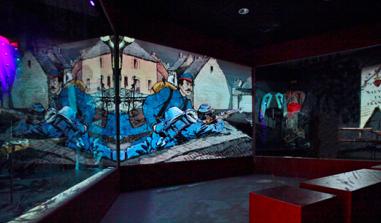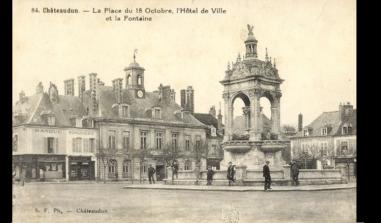Musée des Beaux-Arts et d'Histoire Naturelle de Châteaudun

Copper Prussian helmet plate. 19th century. © Bénédicte Huart
Since 1890, the museum has preserved a rich and diverse heritage, with a leading Franco-Prussian War collection.
Housed in a former school since 1890, the current town museum of Châteaudun was set up in 1864 by the local archaeological society, to conserve local archaeological finds. Over time, the collections have been added to by Egyptian and African objects and, in particular, pieces connected to local history during the Franco-Prussian War.
History of the museum and collections The Musée des Beaux-Arts et d’Histoire Naturelle de Châteaudun was founded in 1864 by the Société Dunoise d’Archéologie, with the goal of preserving local heritage. From the beginning, the archaeological society received many donations from scholars, collectors and scientists.
Among them was the archaeologist Émile Amélineau (1850-1915), who discovered the royal tombs of Abydos in Upper Egypt (1st and 2nd Thinite dynasties). Archaeology and Egyptology
therefore form the cornerstones of today’s collections.
During the course of the 20th century, the museum of the Société Dunoise grew, as paintings, art objects and birds were added to its collections. Meanwhile, the town of Châteaudun received donations and bequests, as well as public loans: the Campana collection, 19th-century paintings, etc. The original museum, housed in the town hall, was transferred for a time to the Chateau of Châteaudun. Then, on 19 August 1890, the town council and the Société Dunoise signed an agreement for the museum to be installed in a former school. In 1897, the size of Marquis Léonce de Tarragon’s bequest to the town meant that an extension to the building was required, with a gallery containing 3 000 specimens of birds and mammals, which are still the making of the museum’s natural history collection today.
In 1952, the Société Dunoise d’Archéologie entrusted the collections to the municipality, while maintaining ownership. The museum therefore came under municipal control. Since then, many new acquisitions have added to the collections, not least the Wahl-Offroy donation in 1971, of art objects from the Near and Far East: ceramics, miniatures, weapons, etc. With a room devoted to the Franco-Prussian War of 1870-71 and a reproduction of a Beauce interior from the early 20th century, Châteaudun’s town museum presents a diverse selection of objects that show the tastes of collectors and donors past and present.
The Franco-Prussian War room Overlooking Rue Louis Baudet, the museum’s second room commemorates Châteaudun’s resistance when it was besieged by the Prussians in 1870. On 18 October that year, the town was attacked by a 12 000-strong German infantry division. A group of 1500 francs-tireurs from Paris, national guards and firemen put up a brave defence. At their head was the Count of Lipowski, a graduate of Saint-Cyr military academy, decorated with the Légion d’Honneur. After the siege, General Von Wittich’s victorious troops set fire to the town, and its motto became Extincta revivisco, meaning “I am born again from my ashes”.
Paintings, engravings, objects, weapons and headdresses present this dark chapter of local and national history. Moullin’s oils and gouaches and Montarlot’s engravings depicting the barricades complement the series of photographs showing the destruction. The display pays tribute to the key figures of Laurentine Proust, Captain Ledeuil and General Lipowski. In the display cases, military paraphernalia is presented alongside mementos gathered from the rubble of the houses. Finally, at the back of the room is the bell from the town hall belltower, dated 1588, damaged by shellfire.
Musée Municipal des Beaux-Arts et d’Histoire Naturelle
3, rue Toufaire - 28200 Châteaudun - Tel.: +33 (0)2 37 45 55 36 Fax: +33 (0)2 37 45 54 46 (town hall – specify “Service Musée”)
Email: musee@mairie-chateaudun.fr
Opening hours:
Open daily (except Tuesdays, 25 December, 1 January and 1 May), 10 am to 12.30 pm
/ 1.30 pm to 6.30 pm, from 1 April to 30 September, and 10 am to 12 noon / 2 pm to 5 pm, from 1 October
to 31 March. Open Monday to Sunday, non-stop from 10 am to 6.30 pm, in July and August.
Group bookings for adults or children can be made on any
day except Tuesday.
Learning materials available on request.
Admission:
Adults: € 3.32 Under 18s: Free Guided tours (for groups of
more than 20 people only): € 2.99 School parties Châteaudun school: Free Others: € 1.29
Cycle of four themed conferences: € 43.85
Combo ticket: Museum and Chateau of Châteadun: € 7
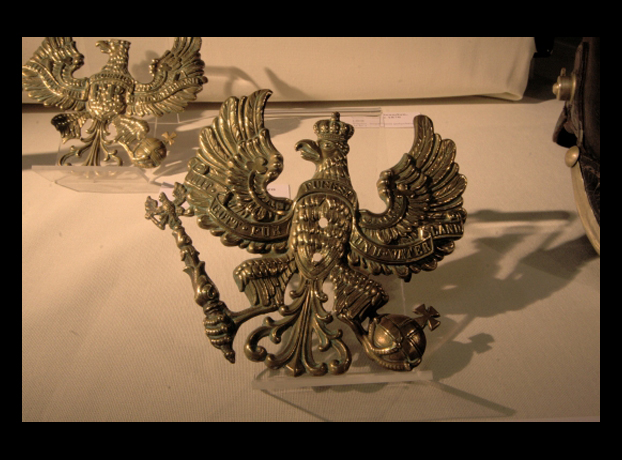
Plaque de casque prussien en cuivre. XIXe siècle. ©Bénédicte Huart
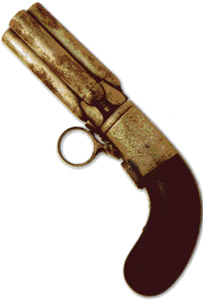
Pistolet poivrière. ©Musée des Beaux-Arts et d'Histoire Naturelle de Châteaudun
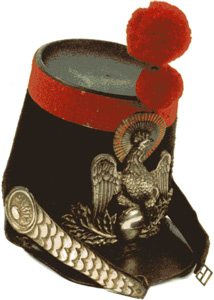
Le Shako est une coiffure hongroise qui remplace le mirliton au sein de l'armée française vers 1801. ©Musée des Beaux-Arts et d'Histoire Naturelle de Châteaudun
Practical information
3, rue Toufaire - 28200
chateaudun
02 37 45 55 36
Plein tarif: 4 €Tarif réduit: 2,30 €Tarif groupe: 3,47 €Gratuit pour les moins de 18 ans
Du 1er avril au 30 septembre :10h à 12h30 et de 13h30 à 18h30 Du 1er octobre au 31 mars :10h à 12h et de 14h à 17hEn juillet-août : 10h à 18h30
Le mardi, les 25 décembre, 1er janvier et 1er mai


